Do you have a question about the CyberPower UPS 1200E and is the answer not in the manual?
Read manual thoroughly, handle with care, avoid electric shock, and do not dispose of batteries in fire.
Install socket-outlet near equipment and ensure leakage currents do not exceed 3.5mA.
Hazardous voltage accessible from battery; avoid battery mutilation and electrolyte contact.
Inspect the UPS upon receipt; the box should contain the UPS unit, power cord, USB cable, manual, and software.
Calculate equipment VA requirements and ensure total load does not exceed 80% of unit capacity.
Install UPS in a protected environment with adequate ventilation and clearance.
Details the Power Switch for ON/OFF and the LCD Function Selected Switch for display contents.
Describes AC inlet, circuit breaker, outlets, serial/USB ports, and communication protection ports.
UPS delivers utility power, maintains battery charge, and regulates output voltage.
UPS provides power from battery when line voltage or frequency falls outside limits.
Instructions for turning the UPS unit on and off using the front panel power switch.
The UPS can be turned on even when AC power is not present, using the power switch.
Clean with dry cloth, note battery life, and unplug for long periods of non-operation.
Store in a cool, dry location. Recharge battery every 3 months for extended storage.
Lists UPS models (1200E, 1500E, 2200E) with their VA and Watt capacities.
Details input voltage/frequency ranges and simulated sine wave output specifications.
Provides physical dimensions, weight, battery type, and typical recharge time.
Covers operating temperature, humidity, and software/communication compatibility.
Addresses issues with runtime, unit not turning on, and outlets not providing power.
Troubleshoots PowerPanel® software inactivity and serial/USB cable connection issues.
Explains the illuminated indicators on the LCD display when the UPS is in line mode.
Explains the illuminated indicators on the LCD display when the UPS is in battery mode.
Read manual thoroughly, handle with care, avoid electric shock, and do not dispose of batteries in fire.
Install socket-outlet near equipment and ensure leakage currents do not exceed 3.5mA.
Hazardous voltage accessible from battery; avoid battery mutilation and electrolyte contact.
Inspect the UPS upon receipt; the box should contain the UPS unit, power cord, USB cable, manual, and software.
Calculate equipment VA requirements and ensure total load does not exceed 80% of unit capacity.
Install UPS in a protected environment with adequate ventilation and clearance.
Details the Power Switch for ON/OFF and the LCD Function Selected Switch for display contents.
Describes AC inlet, circuit breaker, outlets, serial/USB ports, and communication protection ports.
UPS delivers utility power, maintains battery charge, and regulates output voltage.
UPS provides power from battery when line voltage or frequency falls outside limits.
Instructions for turning the UPS unit on and off using the front panel power switch.
The UPS can be turned on even when AC power is not present, using the power switch.
Clean with dry cloth, note battery life, and unplug for long periods of non-operation.
Store in a cool, dry location. Recharge battery every 3 months for extended storage.
Lists UPS models (1200E, 1500E, 2200E) with their VA and Watt capacities.
Details input voltage/frequency ranges and simulated sine wave output specifications.
Provides physical dimensions, weight, battery type, and typical recharge time.
Covers operating temperature, humidity, and software/communication compatibility.
Addresses issues with runtime, unit not turning on, and outlets not providing power.
Troubleshoots PowerPanel® software inactivity and serial/USB cable connection issues.
Explains the illuminated indicators on the LCD display when the UPS is in line mode.
Explains the illuminated indicators on the LCD display when the UPS is in battery mode.
| Topology | Line-interactive |
|---|---|
| Battery Recharge Time | 8 Hours |
| Surge Protection | Yes |
| Number of Outlets | 8 |
| Communication Port | USB |
| Output Frequency | 60Hz |
| Battery Type | Sealed Lead-Acid |
| Typical Backup Time (Half Load) | 8 minutes |
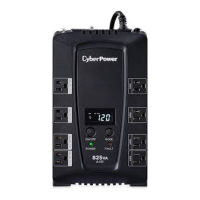
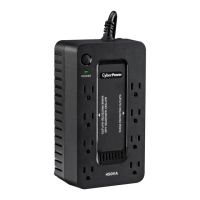
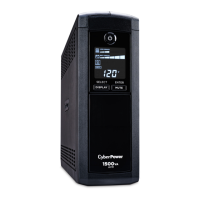
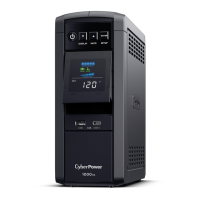
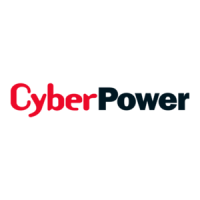



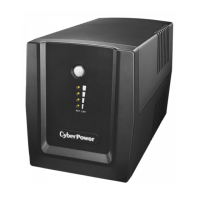
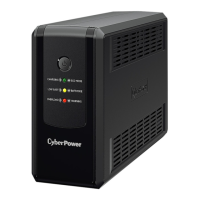
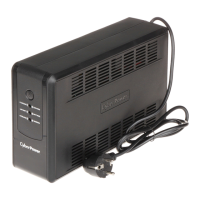

